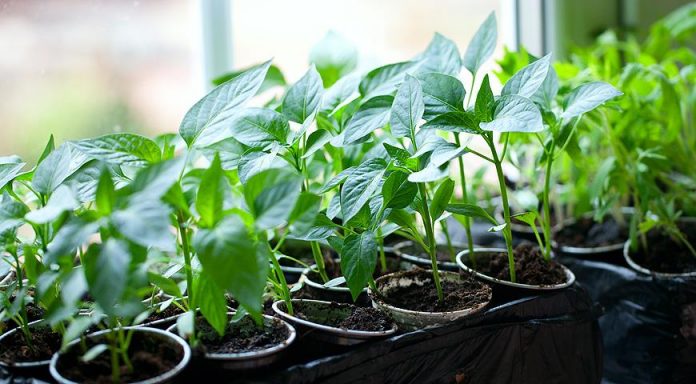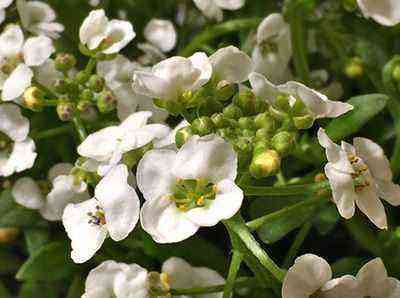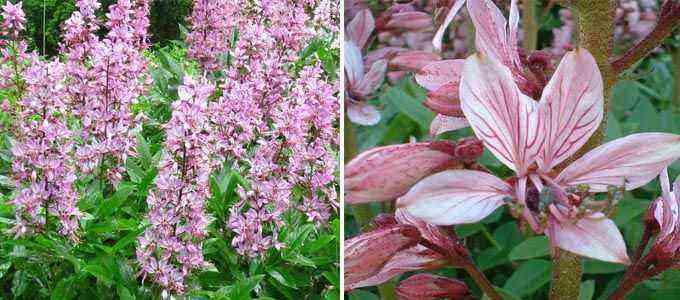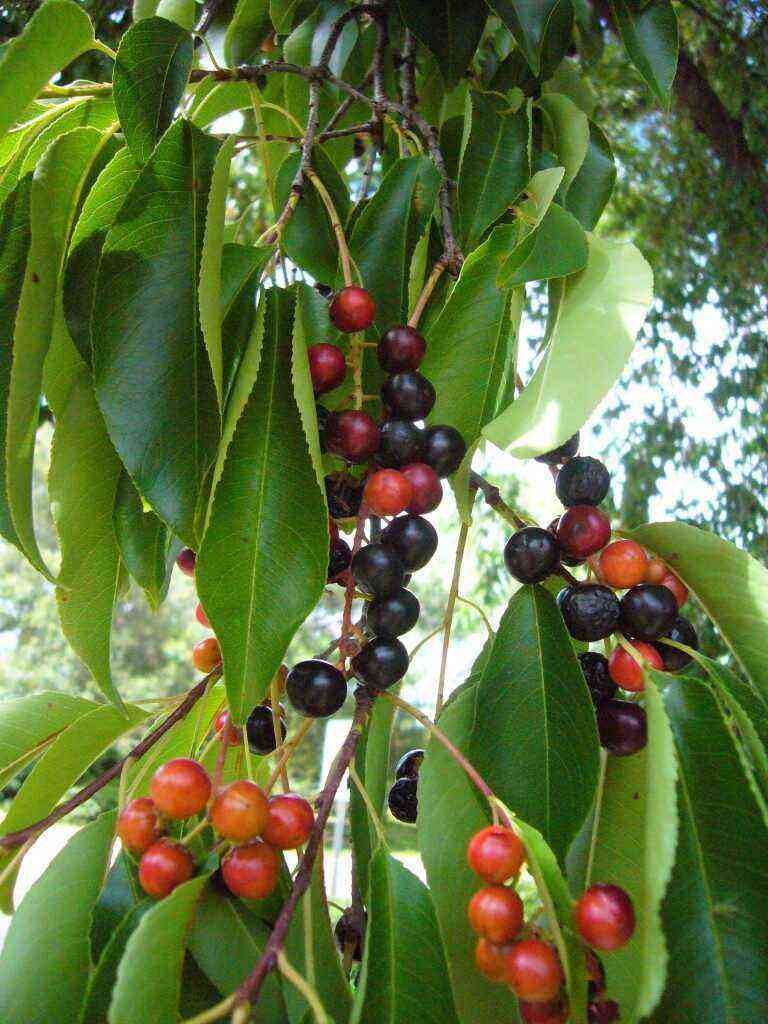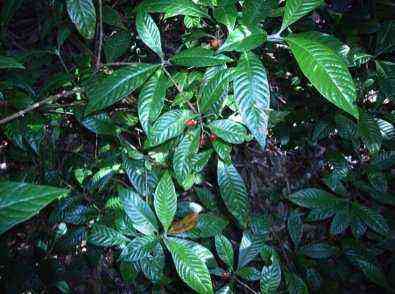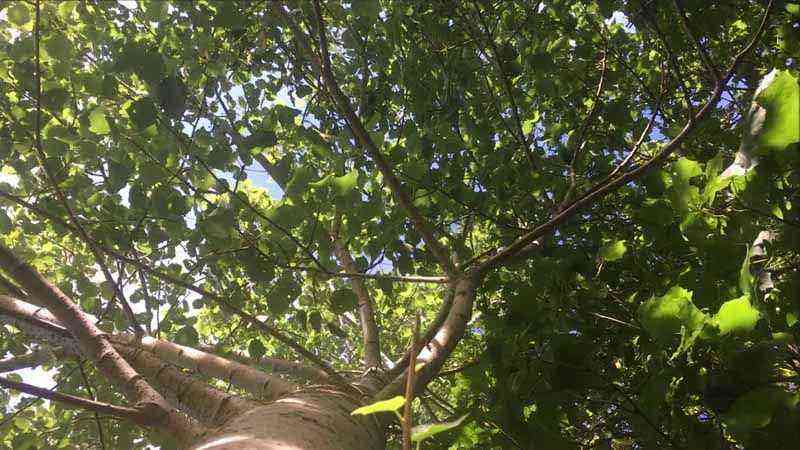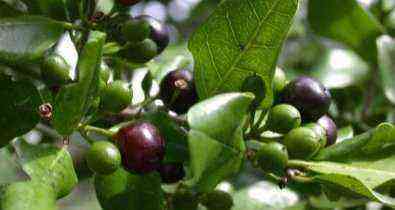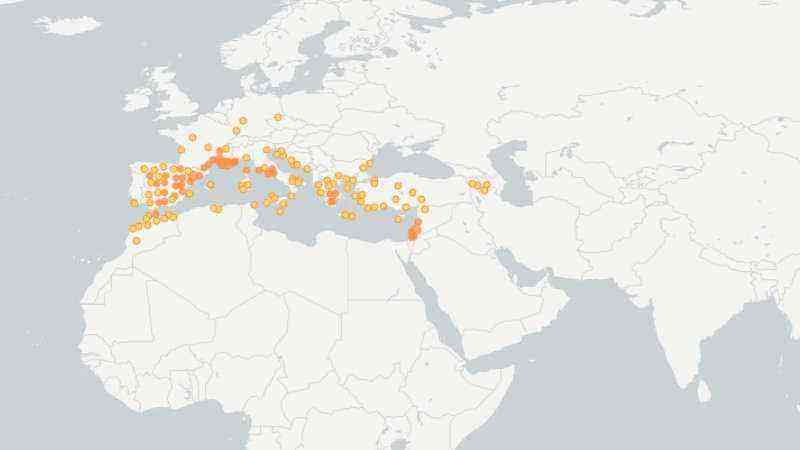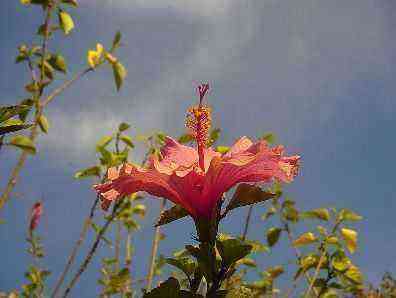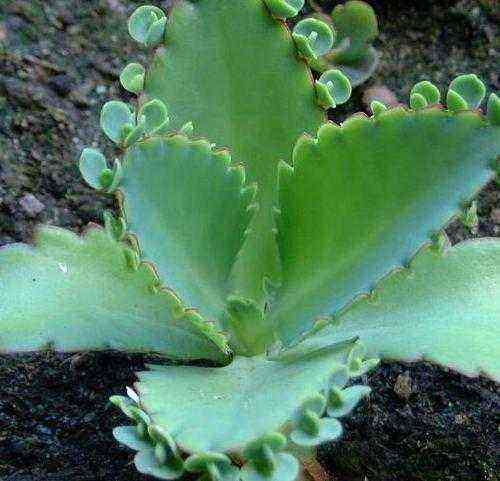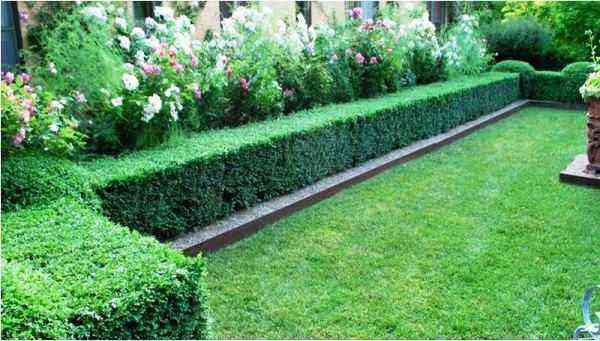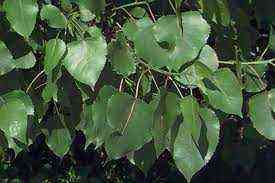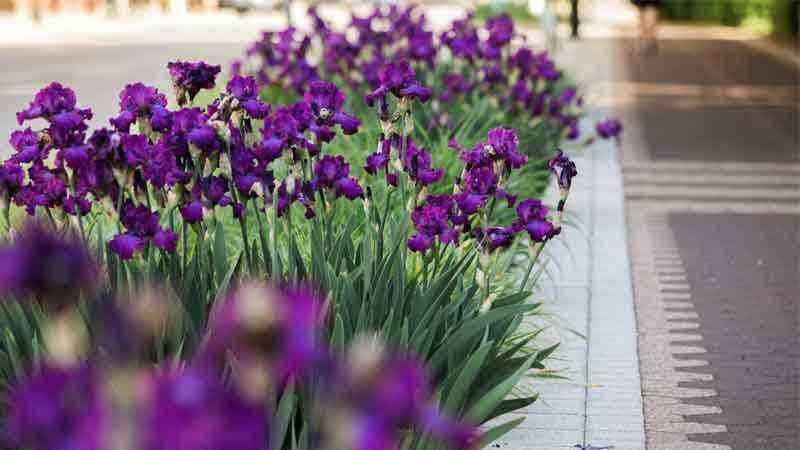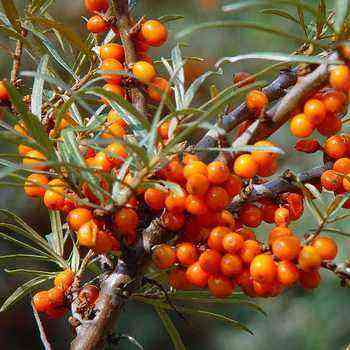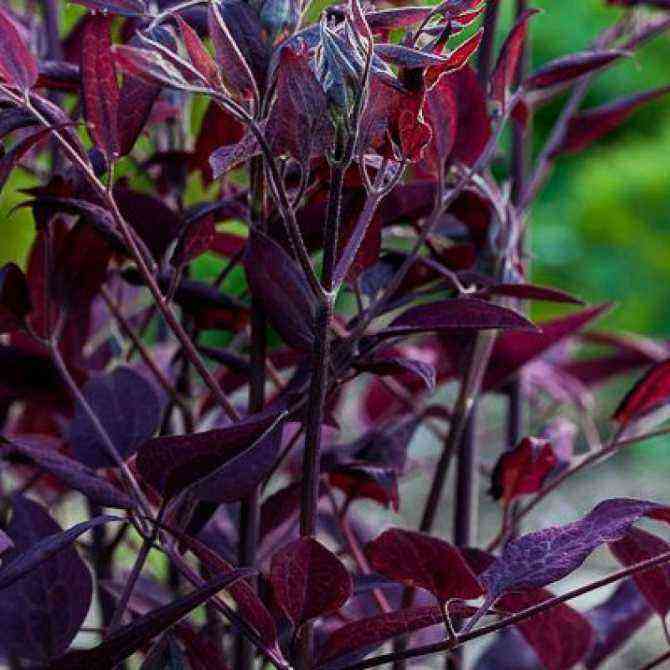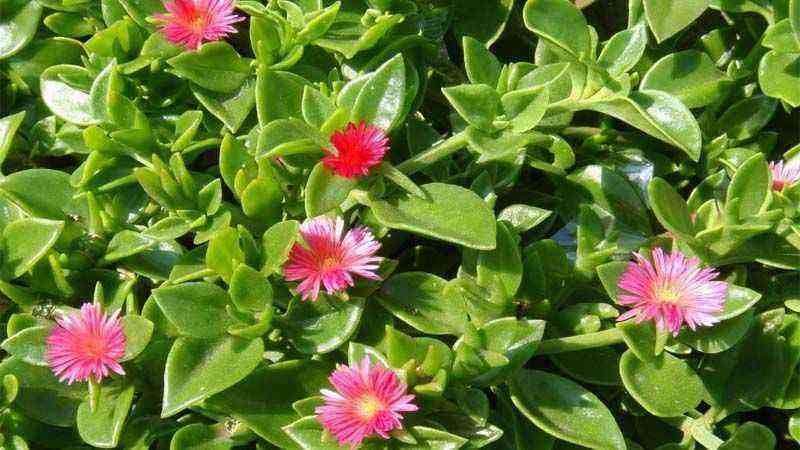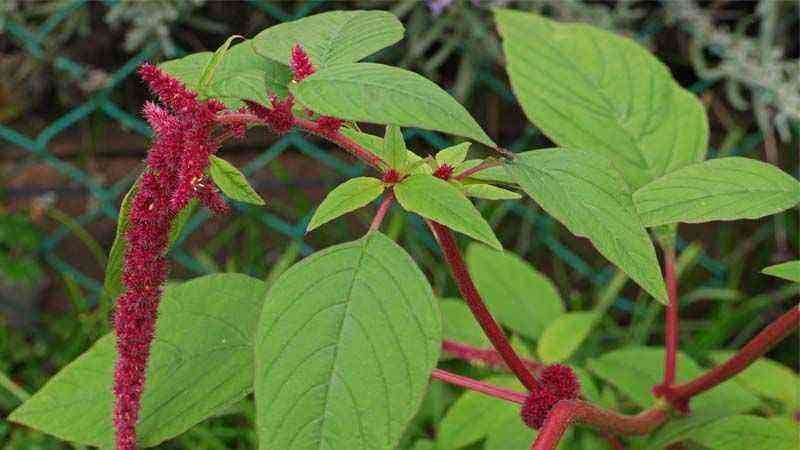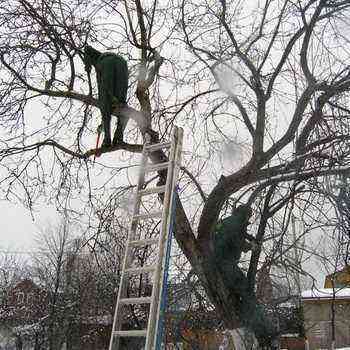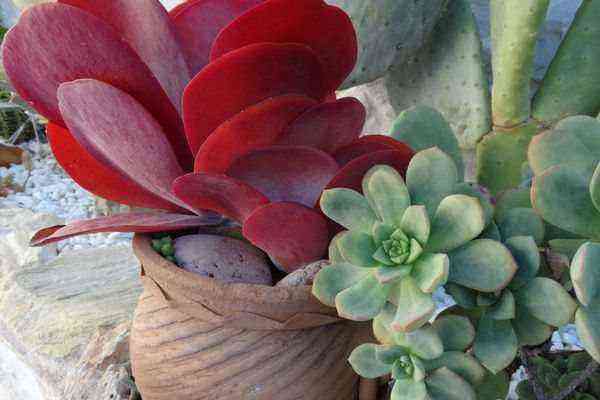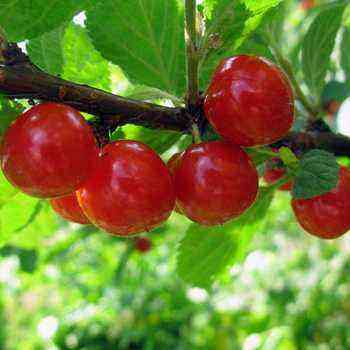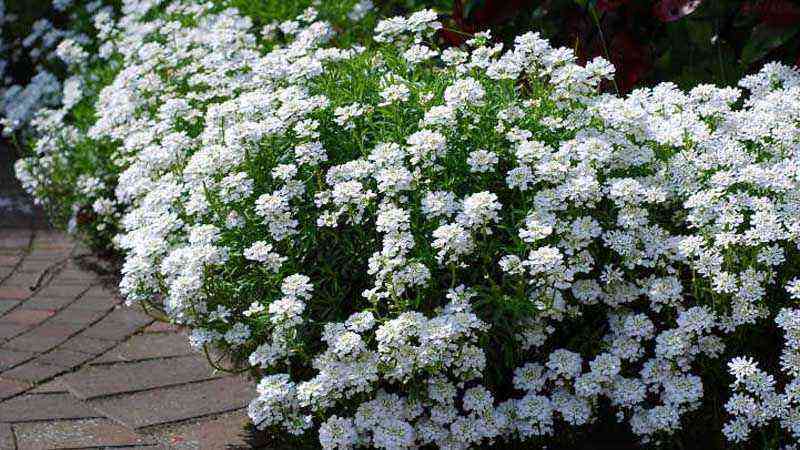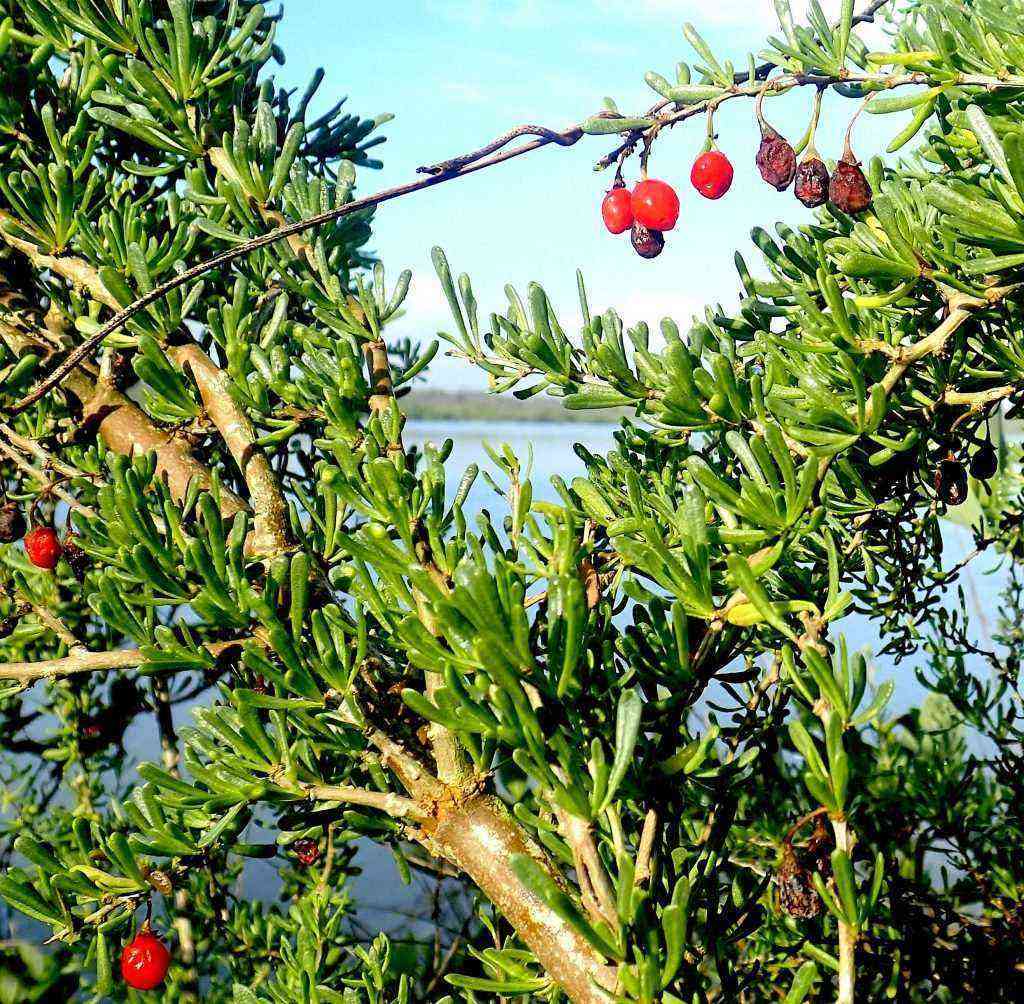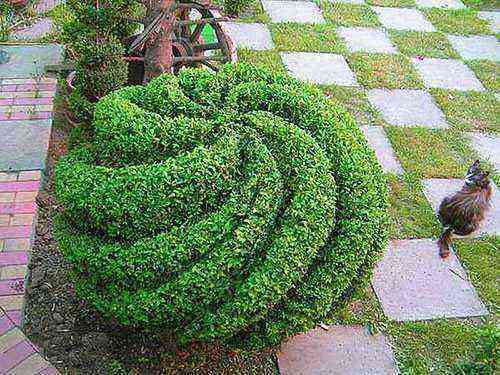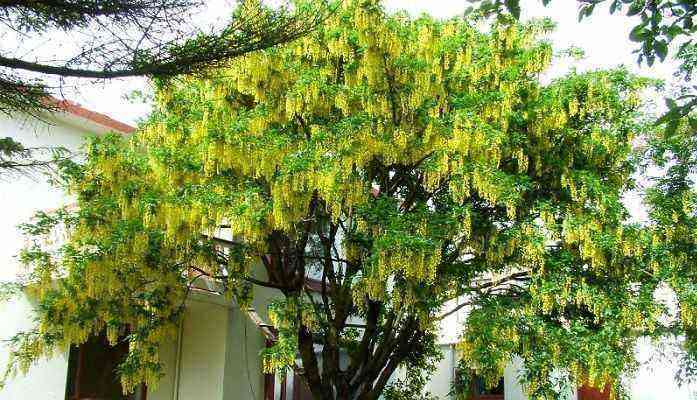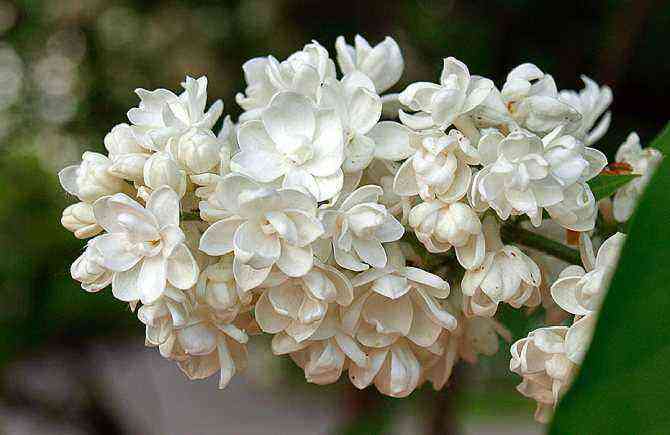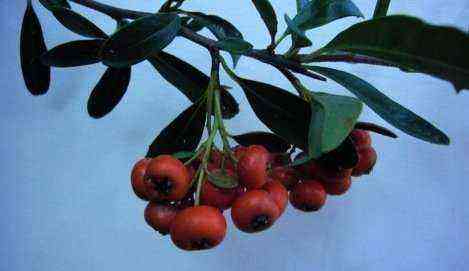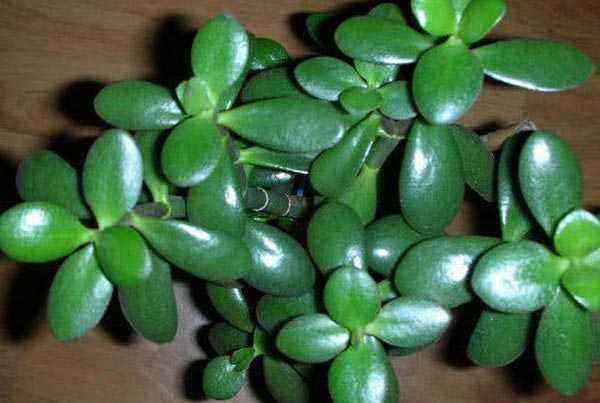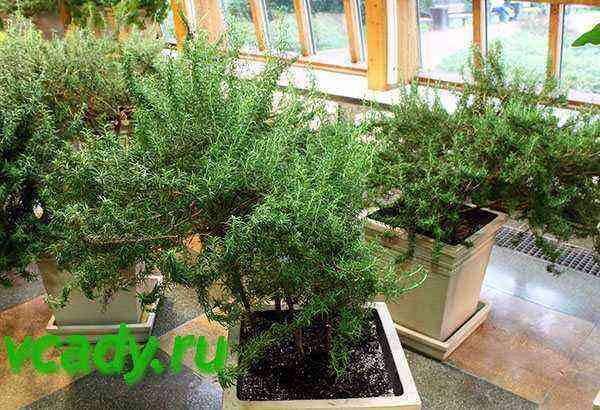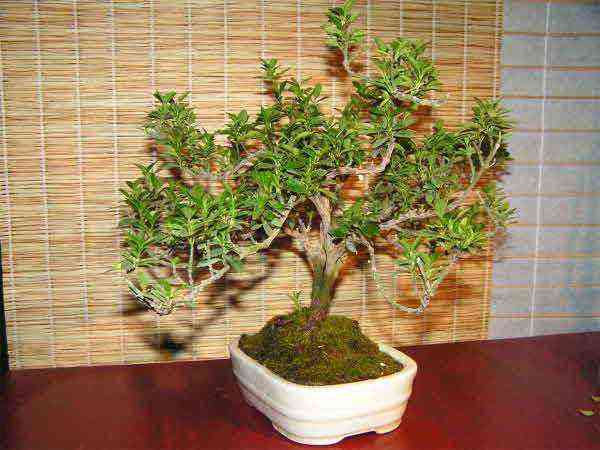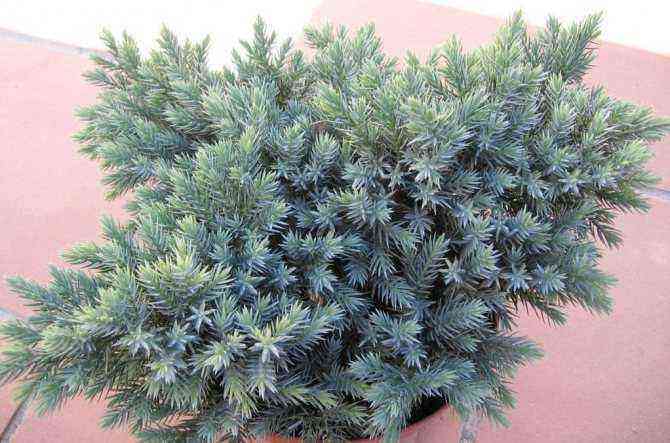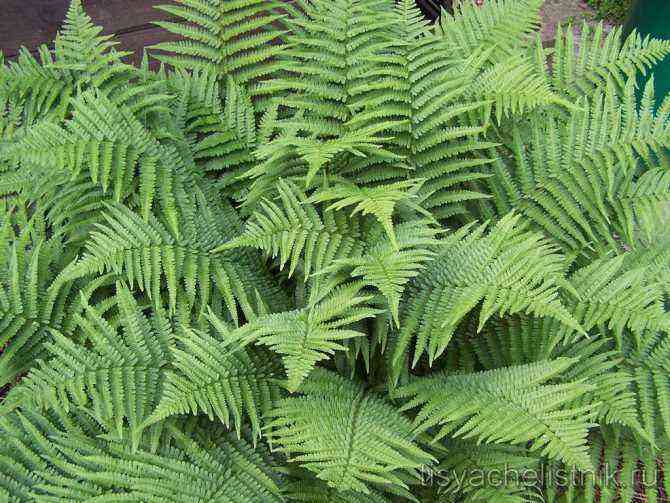How to plant peppers for seedlings correctly at home
Very soon, many residents of the country will spend most of their time in their gardens, dachas, plantations. We all love to eat homemade vegetables. That is why today I want to talk about how to properly plant peppers for seedlings. Traditionally, this process begins at the end of February, at the beginning of March.
Ask why so early? The thing is that the seeds sometimes germinate for a very long time, it takes time from two weeks to a month. And if you sow seedlings at the end of March, then it will rise only at the end of April and will not have time to ripen at all. Therefore, for planting peppers for seedlings, we found the optimal timing, mid-February and until the end of the first half of March.
Of course, in order to grow this seedling, it is necessary to take into account the features that it has. If you suddenly make a mistake in watering, an unsuccessful transplant, then your stems will become coarse and your potential yield will decrease.
To begin with, it is necessary to select the purely visually best seeds so that they are not deformed and dry. The rest can be laid out on rolled gauze in several rows and placed in a solution of potassium permanganate for half an hour. After that, the color should change to a brighter one.
How to plant peppers for seedlings at home on a windowsill
What you need:
Pepper seeds
Soil – for planting
Container for landing
Lure
Planting method:
1. When we have selected the seeds, we need to soak them in settled water for a day.
2. Prepare the soil. It should be loose, that is, there should be some humus, some sand or sawdust, any fruit trees and two parts of the earth, mix everything well.
Tip: Fresh sawdust can also be used, or a little wood ash can be added to stabilize the acidity.
3. We moisten the soil well. We take any stick, fork and make a shallow groove, about 0,5 cm deep. We plant each seed at a distance of 2-3 cm from each other.
4. We fall asleep with earth, compact, water, create the effect of a greenhouse, you can wrap it with foil, be sure to put it in a warm place.
5. As soon as the sprouts hatch, we provide it with 12-hour daylight hours. We put it on the windowsill and illuminate it with a phyto-lamp. We sign the name of the pepper and the date of planting. We leave the seedlings on the windowsill, it must be warm on it. After about 14 days, you can proceed to the next step.
6. We take the usual 1,5 liter bottles and make cups, wrap with polyethylene from both sides and from the bottom. Plus such glasses, moisture in such a glass does not accumulate.
7. Put the soil into a glass, exactly the same as when growing seeds. We carefully transplant the sprout so as not to damage it. Be sure to water it with water so that the earth is compacted, the soil sticks to the root system.
8. When large, real pepper leaves have appeared, you need to make top dressing. You can make it with yeast, pour 10 grams of yeast into a liter eggplant, add 5 tablespoons of sugar, wait for the yeast to multiply, it takes 5-6 hours and spill our seedlings with this water.
9. We are waiting for 15 days and again we do top dressing, but this time potash. Pour 200 gr into a three-liter jar. wood ash, it is imperative, it is necessary to sift it, fill it with boiling water, leave it for a day, everything that is not needed settles to the bottom and we get yellow water, we dilute this water 1/10 and feed the plants.
10. The last dressing is done 4-5 days before planting the peppers in the open ground. Water the plants, do not overfill, otherwise the plant will deteriorate.
This is how we grow seedlings, a good harvest for you.
How to sow peppers correctly without picking
What you need:
Pepper seeds
Soil – for planting
Laminate base – width 10-12 cm
Food film
Toilet paper
Scotch
Water
Planting method:
1. Soak the seeds overnight. Cover the base under the laminate with cling film and put toilet paper on top. We moisten the paper on top with some water.
Tip: It is advisable to take toilet paper that is not dyed or scented.
2. We step back from the edge and begin to spread the seeds at a distance of 1,5 cm from each other.
3. Cover everything on top with toilet paper and another layer of cling film.
4. Now we carefully roll up into a not tight roll, fix it with tape, set it in a container and cover it with cellophane bags. We send to a darkened, warm place.
5. After 4-5 days we take out, unfold our roll and see the state of the seeds. During this period, they should hatch and then you can fill them with a layer of nutrient soil by 1,5-2 cm.
The method is very good and justifies itself. Happy landing.
We sow peppers in peat pots
It is very convenient and effective to grow seedlings in such pots. They themselves are quite durable and consist of ecological material. Inside, the optimal water-air regime is ensured and the seedlings in them develop rapidly.
What you need:
Peat cups (pots)
Pepper seeds
Eggshell
soil
Hot water
Planting method:
1. We put the peat pots in a container covered with oilcloth, film, it can be a box, a box. Pour a pinch of well-crushed eggshell onto the bottom of the cups.
2. Then fill up the soil and crush it a little. Pour hot water over each glass.
3. We make a dimple in the ground and put one swollen seed with tweezers. We sign where we planted what kind of peppers. Now we again cover everything with earth.
4. Cover the pots with foil, oilcloth and put them in a warm place. Preferably near a battery. Turn the box twice a day, one side and the other towards the battery. And yet, be sure, it is necessary to ventilate.
Have a good harvest.
We plant peppers in cups at home
What you need:
Pepper seeds
Disposable cups
Disposable container
Ground
Planting method:
1. Punch a drainage hole in the cups, put them in a disposable container. Let’s prepare the soil. Add purchased land, some peat and humus. You can use the soil whichever you prefer.
2. We put the earth in a glass, do not tamp it too much and plant one seed at a time. With the back end of a spoon or a stick, press the seed into the ground, 2-3 cm. And again, sprinkle it with soil.
3. It is necessary to water our soil a little, after which we close the container. We leave it in the light. Seedlings will be in about a week and a half.
I wish you a good yield, the weight depends on you.
Correct planting of sweet peppers
Planting bell peppers is a very laborious job. You need to do everything right and your work will be crowned with success.
What you need:
Grown peppers
Wood Ash
Planting method:
1. We begin the whole procedure by sowing pepper on seedlings. We plant in the ground, put in a warm place, water, feed.
2. We constantly moisten the earth, plant seedlings in separate pots, if necessary, in this way we will avoid picking. A few days before you are going to plant peppers, we dig up the site, fertilize it with wood ash. And one day before disembarkation, we will water the garden bed and level it.
Tip: Maintain the level of root depth exactly the same as in the pot.
3. We take out the flower from the pot, right from the ground, fertilize again with wood ash. We plant, sprinkle with earth, water. It is better to plant seedlings at a distance from each other, about 50 cm. If possible, cover with a film, and also provide shade at the initial stage.
In no case do we plant sweet peppers and bitter peppers together, as the plants can become dusty.
When is it better to sow peppers for seedlings (video)
Since the time comes for the earliest sowing of seeds for seedlings, then it’s time to think about how we can best do it on time and correctly.
Hope you find these planting methods useful. Have a good harvest, everyone.
Bulgarian pepper: when to plant seedlings, how to sow seeds correctly, planting and care rules
Bell pepper is included in the list of popular vegetables, without which almost no vegetable garden can do. This popularity of the culture is due to the delicious and healthy fruits that are widely used in cooking. To obtain a high yield of sweet peppers, it is necessary to properly plant the seeds for seedlings.
Conditions for growing sweet peppers at home: when to plant seedlings?
The pepper is planted in the ground at the beginning of May – by this time the cold and frost have passed. The seedlings must be strong, healthy and blooming.
Thus, pepper seeds are planted for seedlings in February. If a later planting is made, the seedlings must be illuminated using fluorescent lamps.
For a good harvest, it is very important not to plant seeds too early. The best option to start growing seedlings is mid-February.
If, nevertheless, the seeds were planted in January, it is necessary to prepare the conditions in the greenhouse in order to transplant the peppers in April.
In the central part of Russia, in the north and northwest, bell peppers are grown exclusively using the seedling method. Many gardeners prefer to choose early-maturing hybrid varieties.
In the southern regions, seeds for seedlings are sown in January. The second option is to grow bell peppers by directly planting seeds in the greenhouse in April.
The video shows when to plant:
Moon calendar
Many summer residents and gardeners follow the lunar calendar when planting various vegetables. In accordance with it, the best time for sowing seeds and planting seedlings is on the growing moon.
Auspicious days for planting sweet pepper seeds are:
Further care for vegetables is also carried out according to the lunar calendar – planting in a greenhouse (open ground), watering, picking.
How to grow properly: sowing seeds for seedlings
Before sowing, it is necessary to select whole and dense seeds. Some gardeners germinate seeds in a damp cloth, but this procedure can be dispensed with.
The soil is best purchased from a specialist store. Suitable for sowing seeds and land from the site after a certain treatment.
It should be disinfected in such ways.:
Heat in the oven;
Process with hot potassium permanganate.
Then the soil must be fertilized with sifted wood ash, liquid sodium humate and potassium sulfate.
Selected seeds are recommended to be planted in separate pots with a diameter of 5-6 cm. This will avoid picking and grow healthy seedlings with a strong root system.
When sowing planting material in plastic boxes, the distance between the shoots should be at least 2 cm.
The seeds are placed in the soil mixture to a depth of 3-4 cm. The plantings are sprayed from a spray bottle with warm, settled water and covered with plastic wrap. After the emergence of seedlings, the film is removed, and the boxes with seedlings are placed on a well-lit windowsill or glazed balcony.
It is recommended to grow seedlings from the south side at temperatures ranging from 20-25 degrees Celsius.
Saplings are drawn towards the sun, so they can bend. To straighten the stems, the seedlings should be periodically rotated.
Proper care
Healthy seedlings with a strong root system will thrive with proper care. Seedlings must be watered with warm and settled water as the soil dries up.
The picking of young plants is done after the appearance of 2-3 true leaves. 3-4 hours before the pick, the seedlings need to be watered in order not to injure the root system.
The seedlings should be fed every 5-6 days. Recommended feeding:
A mixture of nitrate and urea;
Mullein solution.
A month before the planned planting of seedlings in a permanent place, they are hardened in the fresh air.
At the age of 60-80 days, young plants (subject to good flowering) are transplanted into greenhouses or under film shelters. By the time of transplanting, at least 10 leaves should form in the seedlings.
The soil must be disinfected and warmed up to +17 degrees Celsius.
Correctly planted and grown sweet pepper seedlings are the key to getting an excellent harvest.
The subtleties of growing pepper:
Planting sweet peppers for seedlings in February at home: choose a variety, select seeds, plant and grow before transplanting into open ground
Bell peppers are a thermophilic vegetable crop suitable for seedlings.
Choosing a variety of bell peppers
When choosing varieties of bell peppers for planting, you need to rely on proven options, about which there are many positive reviews.
Before choosing a sweet pepper variety, you need to decide on the desired result and what you plan to grow. If the goal is large, fleshy fruits with thick and tender pulp, then Winnie the Pooh, the California miracle varieties are perfect for planting. For canning and homemade products, the Kupets and Topolin varieties are ideal.
Depending on the varietal variety, the ripening time of the pepper varies from 100 to 150 days from the moment the first sprouts appear. You can calculate the exact planting time for sweet peppers in February by knowing the characteristics of the variety. Approximate terms of ripening of vegetable crops:
Early varieties – from 80 to 100 days;
Mid-season – from 115 to 130 days;
Late – up to 140 days.
Seed selection
After the selection of the variety is completed, the time comes for planting seeds for seedlings. Seed preparation for sowing is a very important event.
When buying seeds, you need to pay attention to the expiration date and purchase first class planting material.
To determine the germination of seeds, they should be placed in a 3% saline solution. Bad specimens, not suitable for planting, will float up.
Selected seeds must be soaked in a solution of potassium permanganate for 30 minutes, and then rinsed in separated water.
The germination time depends on the method of sowing seeds. If you plant sprouted seeds, seedlings will appear on the 5-6th day. When planting peppers with dry seeds, sprouts appear on the 10-15th day.
Conditions for growing pepper: we sow seeds for seedlings in February
Selected and prepared seeds are sown in shallow plastic boxes or containers filled with a light and nutritious potting mix. The substrate should be warm and moist. The seeds are planted to a depth of 2 cm, sprinkled with soil on top. Containers with planting material are covered with plastic wrap. The room temperature should be at least 25-30 degrees Celsius.
After the emergence of seedlings, the film cover is removed, and the temperature in the room is slightly reduced so that the seedlings do not stretch out.
In low light, seedlings do not grow and develop well, so it is necessary to create artificial lighting so that daylight hours last 12-14 hours.
How to grow with and without top dressing?
Feeding seedlings is a very important stage in growing them. Seedlings that have received all the important nutrients and trace elements at the initial stage of development, form a strong root system and are able to adapt to adverse environmental conditions in the future.
How to grow healthy and strong pepper seedlings:
When 1-2 true leaves appear, the first feeding of the seedlings with ammonium nitrate is performed. The second feeding is done 14-15 days after the first. 14 days before planting in a permanent place of growth, seedlings need to be fed with fertilizers with a high content of potassium and phosphorus.
You can feed seedlings with such folk remedies:
Black tea;
Nettle infusion;
Onion tincture;
Banana peel infusion;
Eggshell tincture.
Seed seeds in February:
Signs of nutrient deficiencies in plants:
Light upper leaves indicate a lack of iron;
The lightening of the lower leaves begins with a lack of nitrogen;
Purple streaks appear on the leaves with a lack of phosphorus;
Withering leaves – lack of copper.
Growing good seedlings will not work without top dressing.
Landing in open ground
The grown seedlings are planted in a greenhouse or greenhouse in the second decade of May, provided that weather conditions permit.
By the time of planting, the height of the seedlings should be within 25-30 cm, 12-13 leaves should appear on it.
Sometimes it happens that after disembarking the seedlings, the night temperature drops sharply. In this case, it is necessary to use electric heaters or cover the seedlings with a double layer of agrofibre.
It is very important to plant peppers at this temperature:
In the afternoon – 22-25 degrees Celsius;
At night – 17-20 degrees Celsius.
Greenhouse and ground peppers care
Basic rules for caring for bell pepper plants:
Watering at least 1-2 times a week with warm, settled water;
Regular airing of the greenhouse;
Periodic loosening of the soil in the beds;
Top dressing with organic and liquid mineral fertilizers.
The temperature in the greenhouse or greenhouse should not be higher than 32-35 degrees Celsius – this will lead to a deterioration in the formation of fruit ovaries.
The first feeding of seedlings should be done two weeks after planting. Optimal feeding:
Potassium sulfate;
Superphosphate;
Mullein solution;
Diluted bird droppings.
Top dressing should be carried out every 10-15 days during the entire growing season.
We hope that our tips will help you correctly determine the timing of planting peppers for seedlings in February. Properly grown seedlings with a strong root system will provide a high yield of tasty and healthy peppers.
Seedling pepper at home – how to sow seeds correctly
Adding an article to a new collection
To get a good pepper seedling and an excellent harvest, you need to provide the plants with several components: fertile soil, light, water and heat. And also – care. But in what proportions to give the seedlings what is needed, we will now tell you.
Pepper belongs to heat-loving crops, therefore, in temperate and northern regions, it is grown mainly in seedlings. At home, seedlings are easiest to grow on a windowsill. There, the plant receives a sufficient amount of heat, light and moisture.
We prepare the soil for seedlings
The soil for growing pepper seedlings must be loose, breathable, with a sufficient amount of nutrients, have a neutral reaction (pH) and at the same time remain moisture-absorbing. The soil and containers should be free of pests and pathogens.
Sift the ingredients for the substrate through a sieve to obtain a homogeneous mixture.
The simplest and most popular recipe for seedling soil can be prepared as follows: take 2 parts of garden soil, 1 part of humus or rotted manure, add a large handful of wood ash to 1 bucket of humus or manure. Then add 1 part peat and 1 part sawdust (or coarse sand).
Take garden land where nightshade crops have not been grown for the last 3-4 years: tomato, pepper, eggplant, potatoes.
Pepper is very sensitive to acidity and excess salts in the soil. The optimum pH is 6-6,5. If the acidity level exceeds this value, add 15-17 g of dolomite flour or lime per 1 kg of soil.
You can add a hydrogel to the soil. Soak small granules the size of a match head in water at a rate of 10 g per liter. When they are swollen, transfer them to the pepper pits. Consumption – about a small jar of swollen gel granules per hole. They absorb water and hold it until the earth dries up. Then the plant begins to slowly “drink” the water from the granules and therefore does not dry out. The hydrogel helps the peppers wait until the next heavy watering. He successfully copes with the opposite situation – if you overdo it with watering, the granules will retain the excess moisture “in reserve”. The optimal frequency of watering seedlings on a hydrogel is 1 time in 1-10 days.
If you purchased soil from a store, you can improve it yourself. To do this, add 5 kg of sand to 1,5 liters of purchased soil, 1-2 tbsp. ash, 1-2 tbsp. dolomite flour and 1 tbsp. complex fertilizers.
Preparing the seeds for sowing
Before sowing, the seeds must be pickled in a 2% solution of potassium permanganate at room temperature for 20-25 minutes. Then rinse them thoroughly in cold water and soak for 18-20 hours in a solution of Zircon (1 drop per 300 ml of water) or Epin (2 drops per 100 ml) at a temperature of 18-22 ° C. These preventive measures will help you avoid viral and fungal infections.
Pepper seedlings do not like transplants, so plant them immediately in a container in which they will grow
Further, the seeds must germinate. To speed up this process, immerse them in Ideal, Agricolastart, Albit, Gumi nutrient solutions according to the instructions for use. Then wrap the seeds in a damp cloth for 2-3 days and place in a plastic bag to create a greenhouse effect. The minimum temperature for pepper germination is 22-24 ° C.
The optimal time for sowing pepper for seedlings is the end of February – the beginning of March.
Seedlings in pots
The substrate is ready and needs to be poured into pots. But they also need to be selected and prepared. The pots are used for both single and group plantings. Considering that many large and capacious containers cannot be placed on the windowsill, they are usually taken for single plantings. Which pots are best for peppers?
Plastic pots are lightweight, fairly sturdy, and can be of any shape. But if you accidentally damage such a container, the seeds will have to be transplanted.
Clay pots are natural products that allow the roots to breathe and saturate them with moisture. The only drawback is that the roots can grow into the pot, which will cause difficulties when transplanting.
Peat pots allow you to plant seedlings in open ground directly in them. At the same time, it is quite difficult to keep the pots transportable before planting in the ground, because water softens the peat.
Paper cups and plastic bags are disposable containers that help you get quality seedlings. The disadvantage of plastic bags is that the root system of the pepper hardly breathes in them.
Fill seedling containers about three quarters
For starters, you can use small pots with a diameter of 4-5 cm. So they take up little space, it is convenient to rearrange them if necessary, and they warm up faster. When the plants grow up and begin to shade each other, transplant the peppers in containers with a diameter of 10-12 cm, especially if you are growing mid-ripening and late-ripening varieties with large leaves.
Having chosen a pot, you can start sowing. Sprouted seeds or seedlings 5-8 mm long are planted in pots with soil and covered with foil or glass. If the soil temperature approaches 25-27 ° C, then the first shoots will appear in 3-5 days.
Seedlings in boxes
You can grow a lot of good seedlings without pots. In this case, you will need a seedling box or a plastic container 12-15 cm deep.
If you want to get a lot of seedlings, take a box of 30×50 or 40×60 cm in size, for each box you need 1-2 bags of seeds.
It is better to use plastic boxes for seedlings.
The order of sowing seeds is as follows:
make grooves in the ground with a depth of 1-2 cm, at a distance of 2-3 cm from each other;
plant the seeds so that there is 2-3 cm between the plants;
cover the box with foil or glass and put it in a warm place, preferably in the sun;
moisten the soil every 1-2 days with a hand sprayer;
as soon as shoots appear, transfer the box for 5-7 days to a bright place with a constant temperature of 16-18 ° C.
Care before germination
In the first 2-3 days from the emergence of seedlings, arrange the seedlings “anhydrous diet” – do not water the plant, but only slightly moisten the surface with a spray bottle. When the cotyledons appear, water the seedlings with warm water (30 ° C). During this period, it is important to maintain a balance, since excessive moisture can lead to the development of putrefactive diseases, and a lack of moisture can cause wilting. Do not forget about the ventilation of the plants, but beware of cold drafts from the window – they can destroy the seedlings.
Loosen the soil periodically to a depth of 5-7 cm
Seedlings can weaken from lack of light and heat. In this case, it is useful to treat it with Epin’s solution 2-3 times with an interval of 8-10 days. Along the way, carry out additional illumination of the seedlings with fluorescent lamps. In this case, ordinary lamps are almost useless – they dry and heat the air more. They also negatively affect the growth of seedlings and heating batteries; to compensate for their influence, it is necessary to install shields made of foil, cardboard and plywood.
After 2-3 weeks, feed the roots with Potassium Humate (25 ml per 10 L of water). The consumption of the composition for one plant should not exceed 300 ml.
Until 5-6 true leaves are formed, the seedlings grow slowly (during this period, flower buds are laid). But before budding, when there are already 6-8 true leaves on the bush, and also during the flowering period, there is a sharp growth of “home seedlings”. At this time, carry out the last feeding. In 10 liters of water, dilute 1,7 g of boric acid, 1 g of ferrous sulfate, 0,2 g of copper sulfate, the same amount of zinc sulfate and 1 g of manganese sulfate. Apply no more than 500 ml per plant.
Everything is not so complicated as it seems at first glance. Follow this algorithm, and you will very soon become the owner of first-class seedlings. All that remains is to plant the pepper in open ground or a greenhouse and wait for a rich harvest.
Planting sweet peppers for seedlings When to sow Proper seed treatment and seedling care
Sweet pepper is a thermophilic culture. Growing a full-fledged pepper by sowing seeds directly into open ground is problematic even in the southern regions. The plant has a long growing season, therefore, seedlings must be grown in order to harvest a good harvest.
We cannot control the weather outside the window, but everyone can create optimal conditions for growing seedlings. After transplanting, the peppers successfully take root in the open field, fruiting begins a month earlier – you are guaranteed to have time to harvest.
How to choose a variety of sweet peppers
When choosing a variety, consider a number of parameters:
Length of summer in your area. Choose early and medium varieties for short summers. If warm weather is guaranteed for 2-2,5 months, varieties with an average ripening period are suitable. In the southern regions, it is possible to grow late-ripening varieties.
The shape of the fruit is also important. Cylindrical and conical peppers with thick walls are good for salads, cubic peppers are best for stuffing, small peppers for pickling.
Fruit color: the darker, the sweeter it tastes.
Bush height. Low-growing and medium-sized ones are planted in beds under a film shelter, tall ones are usually grown in greenhouses.
Planting dates for sweet peppers for seedlings
Timely sowing is necessary to obtain good planting material. If sown too early, young peppers will outgrow in pots, then lower fruits will begin to set. This takes away the strength from the plant, they may not take root in the open field, normal fruiting will be delayed.
How to calculate the planting time of sweet pepper seedlings:
Varieties of early ripening should be sown 60 days before the intended transplantation in open ground,
later – 70-75 days.
The best time for sowing sweet peppers for seedlings is the end of February-beginning of March, if you plan to plant it directly in open ground.
Take into account the subsequent place of growth. In a heated greenhouse, young seedlings are planted by the end of April, in greenhouses and plastic greenhouses – throughout May, and planting in open ground should be carried out in the first decade of June.
Also note that without picking, the peppers will be ready for planting two weeks earlier.
You can sow seedlings in early February, but sweet pepper seedlings will need additional lighting. Use LED or phytolamps. Daylight hours should be 12 hours.
Preparing sweet pepper seeds for seedlings
How to sow sweet peppers for seedlings Seed preparation
Soak or not soak, process or not process sweet pepper seeds before planting, everyone decides for himself. But experienced growers recommend a little patience to speed up germination and select the highest quality seed. Alas, to increase the shelf life, sweet pepper seeds are often overdried – but this must be indicated on the package.
To get friendly shoots, it is necessary to select and process seeds.
How to select the best seeds
Prepare a saline solution (for 1 liter of water, 30 g of table salt), immerse the seeds in it and stir well. See what happens in 5-10 minutes. Weak seeds will float to the surface, and high-quality, healthy ones will sink to the bottom. The latter must be well rinsed with water, laid out on paper and allowed to dry.
Disinfection from pathogens
The next stage is disinfection. A weak solution of potassium permanganate is required (1 g of powder per 1 liter of water), in which the seeds should be held for 15-20 minutes. Then rinse, dry slightly.
Increased germination
Then place the seeds in a gauze bag and keep them in a solution with a growth stimulator for a day. In this case, you do not need to rinse.
You can use folk remedies: take 1 g of wood ash for 2 liter of water. Insist the solution throughout the day, then soak the bag of seeds in it for about 3 hours.
Soaking can be replaced by bubbling – treatment of seeds in oxygen-saturated water. To do this, you need an aquarium compressor. You need to take a large glass container, fill it 2/3 with water (temperature about 20 ° C). Lower the compressor so that the tip is at the bottom and turn on the appliance. When bubbles appear, put a bag of seeds in there and hold for a day.
Seeding of seeds
The seedlings must have good immunity. Resistance to changeable weather conditions, diseases will help increase seed hardening. Keep the seeds in warm water until they swell, then move them to the lower shelf of the refrigerator and stand for a day, then start sowing.
Preparing the soil for sowing sweet peppers
Nutrient soil is essential.
The following options will work:
The safest option is a special mixture for growing pepper seedlings. Such soil has already been cultivated against diseases and pests.
You can prepare the soil mixture yourself. Take 4 parts of peat, 2 parts of sod land, 1 part each of humus and rotted sawdust, 0,5 parts of river sand and add 2-3 tbsp. spoons of wood ash.
Coconut substrate – can be found easily in flower shops.
Soil with hydrogel. To retain moisture in the soil, hydrogel beads are perfect. Lay them already in a swollen state.
Peat tablets are a very convenient option. For subsequent transplants, simply transfer the seedling with it to a larger diameter container.
It is recommended to add a little soil to the soil from the site where the pepper will grow in the future. This contributes to the successful adaptation of seedlings after transplanting into open ground. Before adding to the soil mixture, this soil must be spilled with a solution of potassium permanganate or calcined in the oven for 30-40 minutes.
What container is better to plant
It is best to use individual cups with a volume of about 100 ml as a container for planting seeds. It is desirable that they are not transparent – exposure to sunlight negatively affects the development of the root system. You can make homemade cups, as shown in the video above.
Growing sweet pepper seedlings at home
How to plant sweet peppers on seedlings
How to sow sweet peppers for seedlings correctly?
The main condition is to plant immediately in separate cups so as not to disturb the fragile root system with a dive. Peppers after picking get very sick and stunted, fruiting is delayed.
Depth of landing 0,5-1 see
Preparing a container and soil for seedlings
At the bottom of the container, lay a drainage layer (pieces of foam, broken brick, expanded clay).
Fill the cups ¾ with soil, compact a little, water. Make a groove about 1 cm deep, place 1 seed in each glass. Sprinkle lightly with soil.
Lighting and warmth
For healthy growth of seedlings, it is necessary to provide an optimal microclimate: cover crops with glass or foil. To protect the seedlings from drafts as much as possible, place the containers in a box, install a dense wire around its edges, pull a plastic wrap on top so that it completely covers the ground with crops.
The cold will destroy the plants, they need direct sunlight. The sunlit southern window sills are ideal for growing bell pepper seedlings. When the days are warm, you can take out the seedlings to the insulated balcony, loggia. Be sure to put insulation under the cups with seedlings.
How many days does sweet pepper germinate for seedlings? We maintain the correct temperature regime
Compliance with the correct temperature regime is an important condition for growing seedlings:
Before the first shoots appear, it is necessary to maintain the air temperature within 25-27 ° C.
The sprouts will appear in 7-14 days (depending on the variety). During this time, ventilate the greenhouse every 2 days and spray the soil with a fine spray.
The cover can then be removed. Maintain the daytime air temperature at 23-25 ° C, at night – 16-18 ° C.
The air temperature should not drop below 12 ° C, otherwise the plants will lose their leaves and may die.
Pepper seedlings need to be supplemented if sowing in February
From a lack of lighting, seedlings begin to reach out to look for a light source. Older specimens suspend their growth rates, the root system may begin to rot. The optimal daylight hours for peppers is 9-10 hours. Light up in the daytime (from 8.00 to 20.00).
How to water
Water liberally but infrequently. The soil should be slightly moist, do not allow stagnant water. Watering is best done in the morning. Use softened water (thawed, rainfall, or tap water, settled throughout the day), warm to room temperature.
The roots need to receive oxygen – after each watering, loosen the soil with a clove or a match, only slightly breaking the crust on the surface. Do this very carefully, since damage to the root system leads to inhibition of growth, fruiting may not occur.
How to prepare sweet pepper seedlings for planting in the ground
Fortified seedlings need to be hardened. 10-12 days before transplanting into the open ground, take it out for some time to fresh air or set aside an open window in the room.
It is useful to spray seedlings with herbal infusion (use onions, garlic, needles, marigolds, calendula flowers for infusion).
Thus, the seedlings will become more resistant to diseases and pests.
Immediately after spraying, the seedlings should not be taken out in the sun, let the leaves dry. Water droplets on the leaves can cause sunburn.
Sweet pepper seedlings need to be fed. Do it twice: apply the first dressing at the stage when 3-4 true leaves appear, the second when 5-6 leaves appear.
Under the root, you can add organic matter: mullein solution (1 part of humus to 10 parts of water) or infusion of chicken manure (1 part of dry droppings to 20 parts of water). For foliar dressing, use complex mineral fertilizers.
How to sow bell peppers for seedlings video
Protection against diseases
A slowdown in growth is a possible phenomenon for 2 reasons:
The roots are damaged after a pick. If you are a beginner gardener, it is better to refuse this procedure.
Lack of fertilizer. In addition to the suspension of growth, in this case, pallor of the leaves is observed. It is important to feed the seedlings so as not to ruin them.
The plant loves moisture, but do not overdo it with watering. Excessive watering leads to infection with a black leg: the root collar becomes soft, darkens, the sprout withers and falls. The causative agent of the disease can be initially infected soil.
To prevent this from happening, it is necessary to provide proper care:
When watering, water should not fall on the stems. While they are still tiny, add water through a pipette or syringe to the aisles.
Do not keep under cover for long. Ventilate the greenhouse regularly before germination. Make sure that there is no dampness around the stems.
Maintain Warmth: Spores of the harmful fungus are active in cold, damp soil.
There should be no sudden changes in temperature, so as not to weaken the immunity of the seedlings.
External characteristics of good sweet pepper seedlings
By adhering to the recommendations, you can grow strong sweet pepper seedlings, which will delight you with a good harvest.
Young peppers are ready to be transplanted to a permanent place of growth in 60-80 days. Their height should be 17-20 cm. The thickness of a strong stem at the root should be 3-4 mm. A healthy plant should have 7-10 well-developed leaves; buds may be present.
Transplant in open ground with the establishment of real heat (late May-early June).
